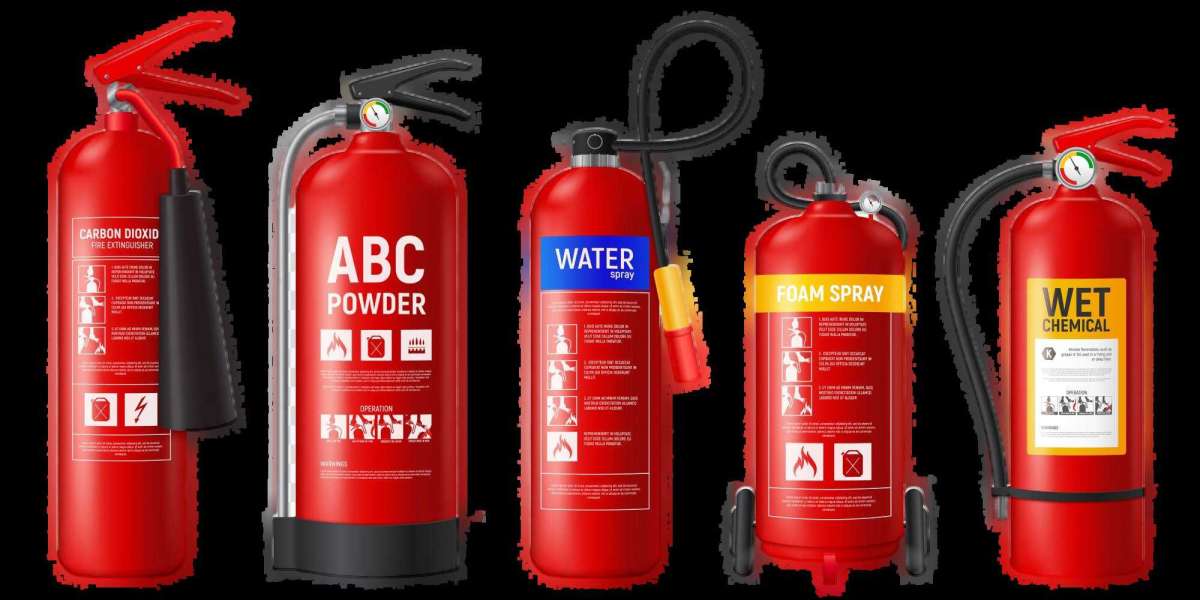Fire extinguishers are crucial safety devices that can help save lives and minimize property damage during a fire emergency. Although many people are familiar with them, understanding their proper use, maintenance, and types can significantly improve safety preparedness. In this blog, we’ll explore the different types of fire extinguisher, their uses, and why they’re essential for both homes and businesses.
What is a Fire Extinguisher?
A fire extinguisher is a portable device used to put out small fires. It works by discharging a specific substance that suppresses or eliminates the fire's ability to burn. Fire extinguishers come in various sizes and are designed for different fire types. They are typically found in locations such as kitchens, offices, industrial facilities, and other places where the risk of fire is higher.
Types of Fire Extinguishers
Fire extinguishers are classified based on the types of fires they are designed to handle. It's important to know which type is appropriate for different situations:
Class A – Ordinary Combustibles (Wood, Paper, Plastics)
- These fires involve materials such as wood, paper, fabric, or other flammable solids. A Class A fire extinguisher uses water or foam to douse the flames effectively.
Class B – Flammable Liquids (Gasoline, Oil, Paint)
- These fires involve flammable liquids, such as gasoline, oil, or alcohol. A Class B fire extinguisher contains carbon dioxide (CO2) or foam, which works to smother the fire and prevent it from spreading.
Class C – Electrical Fires
- These fires involve electrical equipment or wiring. A Class C fire extinguisher uses non-conductive agents like CO2 or dry powder to put out the fire without the risk of electrical shock.
Class D – Combustible Metals (Magnesium, Titanium)
- Class D fires occur when combustible metals, like magnesium or titanium, catch fire. Special dry powder extinguishers are used for this type of fire, as water or foam would only exacerbate the fire.
Class K – Cooking Oils and Grease (Fryers, Kitchen Equipment)
- These fires are often found in commercial kitchens or homes with deep fryers. Class K fire extinguishers use a wet chemical agent to cool and suppress grease fires effectively.
How to Use a Fire Extinguisher (PASS Technique)
Knowing how to operate a fire extinguisher is crucial for effective use during an emergency. The PASS technique is a simple acronym that outlines the steps:
P – Pull the Pin
Remove the safety pin or locking mechanism at the top of the fire extinguisher.A – Aim the Nozzle
Point the nozzle or hose at the base of the fire. This is where the fire is most vulnerable and can be extinguished more effectively.S – Squeeze the Handle
Apply steady pressure to discharge the extinguishing agent.S – Sweep from Side to Side
Move the nozzle in a sweeping motion from side to side to cover the entire base of the fire. Continue until the fire is fully out.
Why Fire Extinguishers Are Essential
Quick Response to Fires Having a fire extinguisher readily available can help contain a fire in its early stages, potentially preventing it from spreading and causing widespread damage.
Save Lives A fire extinguisher can make the difference between a manageable fire and a devastating blaze, allowing people to escape or contain the fire long enough for emergency services to arrive.
Protect Property For both residential and commercial properties, having fire extinguishers on hand helps protect valuable assets and minimizes fire damage.
Workplace Safety In offices, factories, and other workplaces, fire extinguishers are critical for maintaining a safe environment. Businesses are often legally required to have fire extinguishers in key locations to comply with fire safety regulations.
Peace of Mind Knowing that you have the tools to fight a fire can provide peace of mind, especially in areas where fires might be more common, such as kitchens or industrial settings.
Maintenance and Inspection
Regular maintenance and inspection are key to ensuring that fire extinguishers will function properly when needed. Here's what you should do:
Monthly Visual Inspections
Check that the extinguisher is easily accessible, the pressure gauge is in the green zone, and there are no obvious signs of damage.Annual Professional Inspections
Have your fire extinguishers inspected by a professional at least once a year to ensure they are fully charged and in working condition.Replace or Recharge After Use
Even if the fire extinguisher was only partially used, it should be recharged or replaced immediately after any usage.Service Every 6 Years
Every 6 years, a fire extinguisher needs to undergo a more thorough inspection and possible maintenance, including recharging and replacing certain components.
Conclusion
Fire extinguishers are vital tools for protecting lives and property from fire hazards. Understanding the different types of extinguishers and how to use them effectively can make all the difference in an emergency. Whether at home, in the office, or in a workplace, having a well-maintained fire extinguisher and knowing how to use it properly is an essential part of any fire safety plan.
Stay safe, stay prepared!








